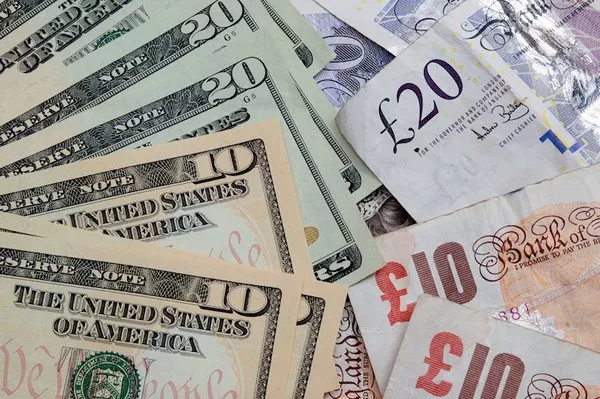The Australian dollar (AUD) is one of the most traded currencies in the world. Like any currency, its value fluctuates over time based on a variety of economic, political, and global factors. In recent years, many traders and investors have wondered, why is the Australian dollar weakening? Understanding the factors that contribute to the weakening of the Australian dollar can provide insight into the wider financial landscape and help businesses, investors, and individuals make informed decisions.
In this article, we will explore the main reasons why the Australian dollar (AUD) has weakened. These reasons can be divided into internal economic factors, external global influences, and policy decisions that have led to a weakening of the Australian dollar. By the end of this article, you will have a clearer understanding of why the Australian dollar has weakened and how it will affect various sectors of the economy.
Understanding the Australian Dollar (AUD)
AUD Overview
The Australian Dollar (AUD) is the official currency of Australia, as well as some of its territories and Pacific Island nations. It is the sixth most traded currency in the world and plays an important role in global financial markets. The currency is managed by the Reserve Bank of Australia (RBA), which influences the Australian dollar through interest rates, monetary policy, and economic intervention.
The strength of the Australian dollar is critical to the country’s international trade, investment, and its overall economic health. The value of the currency is determined by a variety of factors, including domestic economic performance, commodity prices, interest rate differentials, global risk sentiment, and geopolitical events.
Key factors leading to a weaker Australian dollar
1. Falling commodity prices
Australia is a major exporter of commodities such as iron ore, coal, natural gas and gold. The strength of the Australian dollar has traditionally been closely tied to the performance of these major exports. When commodity prices are high, the Australian economy tends to perform well and the Australian dollar strengthens. However, when commodity prices fall, the Australian economy may experience a downturn, leading to a weaker Australian dollar.
Impact of falling commodity prices
Iron ore and coal prices: Iron ore is Australia’s largest export, with coal a close second. A decline in global demand for these commodities, especially from major consumers such as China, can have a significant impact on Australia’s trade balance. When demand for iron ore or coal weakens, the country’s export revenue declines, causing the Australian dollar to depreciate.
Global supply chains: Disruptions in global supply chains, such as the COVID-19 outbreak, lead to reduced demand for commodities, further depressing commodity prices and negatively affecting the Australian dollar.
2. China’s economic slowdown
China is Australia’s largest trading partner, and a large portion of Australia’s exports go to the Chinese market. As China’s economy slows, demand for Australian exports such as iron ore, coal, and agricultural products declines. This directly affects the value of the Australian dollar.
Impact of China’s economic health
China’s economic performance is one of the biggest drivers of a stronger or weaker Australian dollar. When China faces an economic slowdown, demand for Australian goods decreases, leading to lower export revenues. This, in turn, puts downward pressure on the Australian dollar.
China’s transition to a more sustainable, consumption-driven economy has also led to a decline in demand for commodities such as iron ore and coal. This has been further exacerbated by trade tensions between the United States and China, making the economic relationship between the two countries more unstable.
3. Interest rate differentials
Interest rates are a powerful tool central banks use to influence the value of their currencies. The Reserve Bank of Australia (RBA), which sets the official cash rate, frequently adjusts interest rates to control inflation and promote economic stability. When interest rates are high, it attracts foreign investment and strengthens the currency. Conversely, when interest rates are low, the currency may weaken as investors seek higher returns elsewhere.
Low interest rates in Australia
In recent years, the Reserve Bank of Australia has kept interest rates at historically low levels to stimulate economic growth. However, the low interest rate environment has led to a depreciation of the Australian dollar because it makes Australian assets less attractive to foreign investors. Investors typically seek higher yields, and when Australian interest rates are low, they are more likely to invest in countries with higher returns, such as the United States.
The Federal Reserve regularly raises interest rates in response to the conditions of its own economy, which leads to a larger interest rate differential between the United States and Australia. As a result, the U.S. dollar (USD) has strengthened relative to the Australian dollar, putting downward pressure on the Australian dollar.
4. Global Risk Sentiment and Investor Behavior
The value of the Australian dollar is also affected by global risk sentiment. The Australian dollar is often considered a “risk-on” currency, meaning that it tends to perform well when global markets are optimistic and investors are willing to take on risk. Conversely, during times of global uncertainty, the Australian dollar weakens as investors seek the safety of more stable, low-risk currencies such as the US dollar and Swiss franc.
Impact of Global Events
COVID-19 pandemic: Global economic uncertainty caused by the COVID-19 pandemic has led to a shift in investor sentiment, with many flocking to safer assets. This has caused the value of the Australian dollar to fall as risk appetite has declined.
Geopolitical tensions: Political uncertainty such as trade disputes, political instability, and geopolitical conflicts can also keep investors wary, causing them to exit riskier investments and seek stability in safer currencies.
Commodity-centric economy: Since the Australian economy is heavily dependent on commodity exports, global market instability can directly affect demand for these commodities, leading to a weaker currency.
5. Australia’s Fiscal and Trade Deficits
A trade deficit occurs when a country imports more than it exports. Although Australia has maintained relatively strong economic growth with the help of foreign capital inflows, it frequently runs trade deficits. When the country imports more goods and services than it exports, demand for foreign currencies increases, putting downward pressure on the Australian dollar.
Similarly, the fiscal deficit (the gap between government spending and revenue) can also affect investor confidence. If investors believe that the Australian government is overindebted, or there are concerns about fiscal management, they may decide to move their investments elsewhere, weakening the Australian dollar.
6. Commodity Export Dependence and Structural Issues
The Australian economy is heavily dependent on commodity exports. While this was a source of strength during commodity booms, it also makes the economy vulnerable to external shocks. The economy’s structural weaknesses, such as slow productivity growth and high reliance on foreign investment, can make it more vulnerable to currency fluctuations.
Impact of External Shocks
Dependence on a few key industries, such as mining and agriculture, makes the Australian economy vulnerable to external shocks. A decline in global demand for these commodities could lead to an economic slowdown, exacerbating the depreciation of the Australian dollar.
7. Government and Central Bank Policies
Government policies, including fiscal stimulus, trade agreements, and budget decisions, also play a role in determining the value of the Australian dollar. In addition, the monetary policy of the Reserve Bank of Australia (RBA) also affects the value of the currency. When the RBA takes a dovish stance (such as lowering interest rates or implementing quantitative easing), it may weaken the Australian dollar.
Influence of the Reserve Bank of Australia
The RBA’s decision to lower interest rates in response to domestic economic conditions is an important factor in the depreciation of the Australian dollar. As mentioned earlier, when interest rates are low, the returns on Australian investments are less attractive to foreign investors, reducing demand for the Australian dollar.
Impact of a weaker Australian dollar on the Australian economy
1. Benefits for exporters
A weaker Australian dollar can be a good thing for Australian exporters. When the Australian dollar depreciates, Australian goods and services become cheaper for foreign buyers. This can make Australian exports more competitive in international markets, benefiting industries such as mining, agriculture and tourism.
For example, a weaker Australian dollar may benefit Australian wheat growers, who can sell their products at more attractive prices in global markets. Similarly, travel becomes cheaper for international tourists, which may boost the tourism industry.
2. Rising import costs
On the downside, a weaker Australian dollar means that imports become more expensive. For Australian businesses that rely on imported goods or services, such as manufacturers and retailers, the cost of materials and finished products rises. This can lead to inflationary pressures and higher living costs for consumers, especially for imported goods such as electronics, fuel and food.
3. Investment impact
A weaker Australian dollar can also affect the returns on Australian investments. If international investors are concerned about a weaker Australian dollar, they may be less likely to invest in Australian assets. This can lead to a reduction in foreign investment inflows, which could slow economic growth.
Conclusion
The depreciation of the Australian dollar (AUD) is driven by a complex set of internal and external factors, including falling commodity prices, global economic trends, interest rate differentials, and fiscal and trade deficits. While the depreciation of the Australian dollar has created opportunities for exporters, it has also increased costs for consumers and businesses that rely on imports. In addition, it has created challenges for investors and the economy, especially during times of global uncertainty.
Understanding the reasons behind the depreciation of the Australian dollar helps to better understand its impact on the Australian economy and provides important insights for businesses, investors, and policymakers. By paying attention to global trends and economic policies, stakeholders can better navigate the fluctuating value of the Australian dollar and make informed decisions for the future.

























